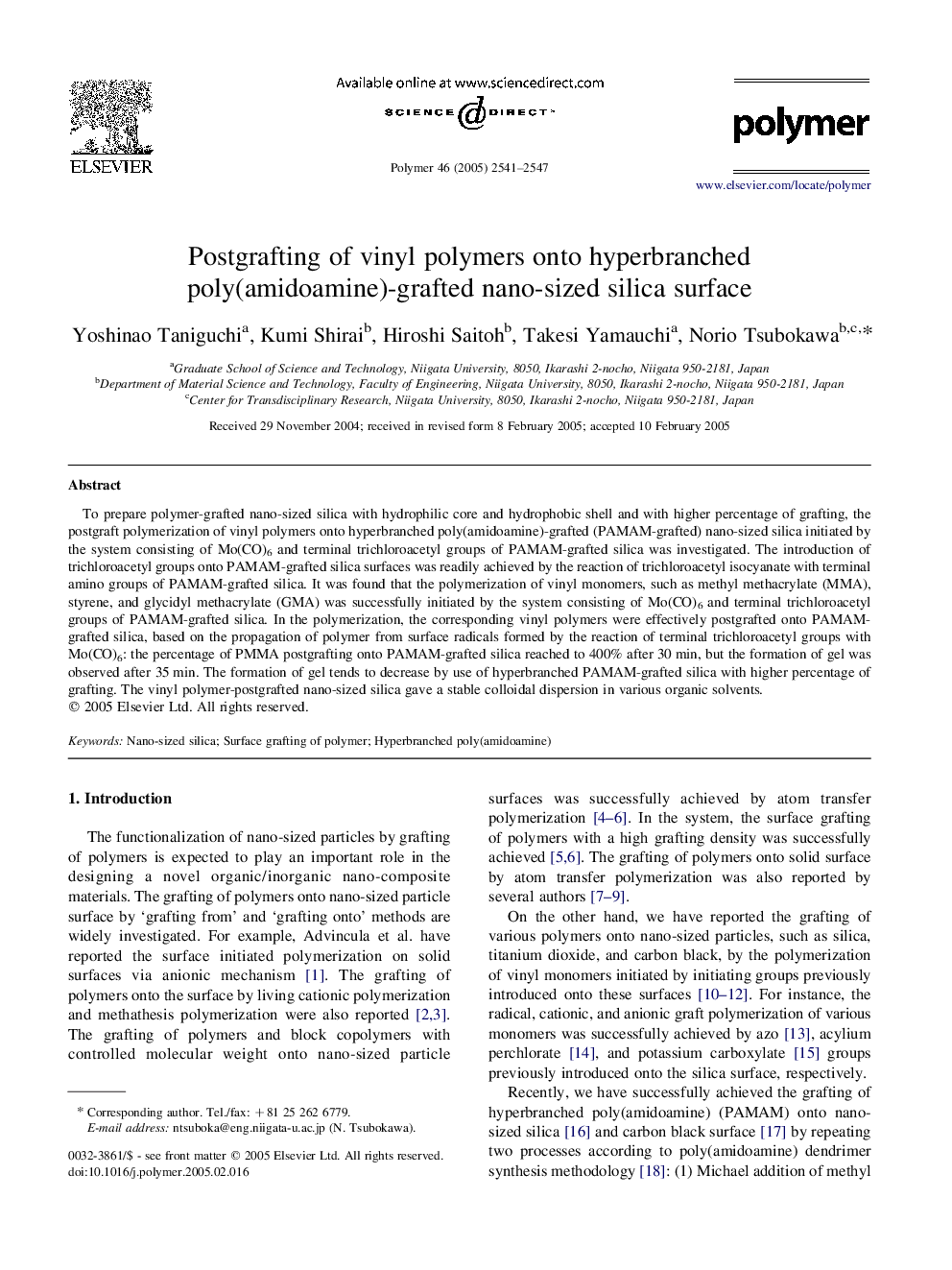| Article ID | Journal | Published Year | Pages | File Type |
|---|---|---|---|---|
| 5191682 | Polymer | 2005 | 7 Pages |
To prepare polymer-grafted nano-sized silica with hydrophilic core and hydrophobic shell and with higher percentage of grafting, the postgraft polymerization of vinyl polymers onto hyperbranched poly(amidoamine)-grafted (PAMAM-grafted) nano-sized silica initiated by the system consisting of Mo(CO)6 and terminal trichloroacetyl groups of PAMAM-grafted silica was investigated. The introduction of trichloroacetyl groups onto PAMAM-grafted silica surfaces was readily achieved by the reaction of trichloroacetyl isocyanate with terminal amino groups of PAMAM-grafted silica. It was found that the polymerization of vinyl monomers, such as methyl methacrylate (MMA), styrene, and glycidyl methacrylate (GMA) was successfully initiated by the system consisting of Mo(CO)6 and terminal trichloroacetyl groups of PAMAM-grafted silica. In the polymerization, the corresponding vinyl polymers were effectively postgrafted onto PAMAM-grafted silica, based on the propagation of polymer from surface radicals formed by the reaction of terminal trichloroacetyl groups with Mo(CO)6: the percentage of PMMA postgrafting onto PAMAM-grafted silica reached to 400% after 30Â min, but the formation of gel was observed after 35Â min. The formation of gel tends to decrease by use of hyperbranched PAMAM-grafted silica with higher percentage of grafting. The vinyl polymer-postgrafted nano-sized silica gave a stable colloidal dispersion in various organic solvents.
